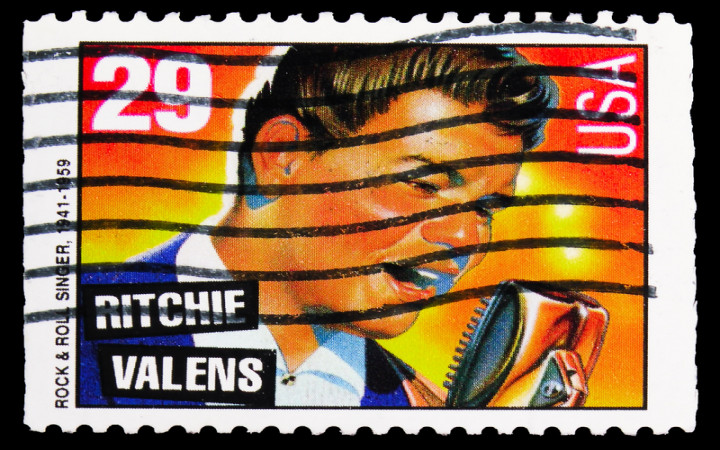Today’s Wonder of the Day was inspired by Wonder Team. Wonder Team Wonders, “Who was Ritchie Valens?” Thanks for WONDERing with us, Wonder Team!
Are you or a friend learning to play an instrument? Can you imagine becoming a famous musician while still in school? Today’s Wonder is about someone who did just that!
Ever since rock and roll became popular in the 1950s, musicians have introduced fresh sounds. Have you heard of Chuck Berry or the Beatles? They became popular with their styles. Ever wondered about the first rock and roll artist who infused Latin American rhythms and Spanish lyrics? He’s the subject of today’s Wonder. It’s Ritchie Valens, of course!
Richard Steven Valenzuela was born on May 13, 1941, in California. His family exposed him to many kinds of music during his childhood. Part of his family had roots in Mexico, and they played Mariachi music and other folk music. Valenzuela’s father played a wide variety of music styles, including flamenco, rock and roll, and blues. He knew he wanted to be a musician from a very early age.
When he found a broken guitar as a boy, a relative fixed it for him. Ritchie taught himself to play the guitar right handed, even though he was a left-handed person. His family encouraged his interest in music, and he learned several other instruments.
As a high school student, Valenzuela played his guitar and sang for his classmates. In 1957, he joined a musical group called the Silhouettes. The group played small gatherings at schools and area clubs. Many stories credit the local gigs with Valenzuela’s discovery and looming success.
Del-Fi recording label executive Bob Keane listened to Valenzuela’s performance and asked him to record several songs. In June 1958, one recording released and went onto the Billboard Hot 100—“Come On, Let’s Go.” So many recordings of the song sold that Valens dropped out of high school. He was going to be a professional musician! Keane convinced Valenzuela to shorten his name to Valens.
In October 1958, they invited Ritchie Valens to perform on the popular music TV show American Bandstand. Valens and his music skyrocketed in popularity. His next song released, “Donna,” rose to number two on the Hot 100 and awarded gold record status. The flip side of that record was maybe Valens’ song most recognized by people today—“La Bamba.”
“La Bamba” was exceptional for the time because it joined Mexican folk song roots with a rock beat. The words of the song are Spanish. Valens was not fluent in Spanish, even though a lot of his family was. To prepare for recording the song, Ritchie received language help from relatives.
January 1959 was a turning point for Valens and his career. He joined a group of famous performers for a trip across Midwestern U.S. states—the Winter Dance Party tour. Valens, Buddy Holly and the Crickets, Dion and the Belmonts, and J. P. Richardson, known as the Big Bopper, traveled together and gave concerts. On February 3, 1959, Valens, Holly, and Richardson chartered a plane in Iowa. Their planned destination was to the next day’s show in Minnesota. However, the plane crashed, and there were no survivors.
Even though Ritchie Valens passed away at 17, he left a legacy. He recorded songs that are still popular today. He has inspired generations of musicians. The movie, “La Bamba,” about his life, came out in 1987. He received a star on the Hollywood Walk of Fame in 1990. In 1993, the Legends of American Music U.S. Postal Service stamp series included him. The Rock and Roll Hall of Fame inducted him in 2001.
What type of legacy do you want to leave? How will you change the world?
Standards: CCRA.R.1, CCRA.R.3, CCRA.R.10, CCRA.L.1, CCRA.L.3, CCRA.L.4, CCRA.L.5, CCRA.L.6, CCRA.SL.1, CCRA.SL.3, CCRA.SL.4, CCRA.W.3, CCRA.W.4




